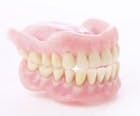The U.S. Department of Health and Human Services (HHS) and the U.S. Environmental Protection Agency (EPA) announced important steps to ensure that standards and guidelines on fluoride in drinking water continue to provide the maximum protection to the American people to support good dental health, especially in children. HHS is proposing that the recommended level of fluoride in drinking water can be set at the lowest end of the current optimal range to prevent tooth decay, and EPA is initiating review of the maximum amount of fluoride allowed in drinking water.
These actions will maximize the health benefits of water fluoridation, an important tool in the prevention of tooth decay while reducing the possibility of children receiving too much fluoride. The Centers for Disease Control and Prevention named the fluoridation of drinking water one of the 10 great public health achievements of the 20th century.
HHS and EPA reached an understanding of the latest science on fluoride and its effect on tooth decay prevention, and the development of dental fluorosis that may occur with excess fluoride consumption during the tooth forming years, age 8 and younger. Dental fluorosis in the U.S. appears mostly in the very mild or mild form–as barely-visible lacy white markings or spots on the enamel. The severe form of dental fluorosis, with staining and pitting of the tooth surface, is rare in the U.S.
There are several reasons for the changes seen over time, including that Americans have access to more sources of fluoride than they did when water fluoridation was first introduced in the U.S. in the 1940s. Water is now one of several sources of fluoride. Other common sources include dental products such as toothpaste and mouth rinses, prescription fluoride supplements and fluoride applied by dental professionals. Water fluoridation and fluoride toothpaste are largely responsible for the significant decline in tooth decay in the U.S. over the past several decades.
HHS’ proposed recommendation of 0.7 mg of fluoride per liter of water replaces the current recommended range of 0.7 to 1.2 mg. This updated recommendation is based on recent EPA and HHS scientific assessments to balance the benefits of preventing tooth decay while limiting any unwanted health effects. These scientific assessments also will guide EPA in making a determination of whether to lower the maximum amount of fluoride allowed in drinking water, which is set to prevent adverse health effects.
The new EPA assessments of fluoride were undertaken in response to findings of the National Academies of Science (NAS). At EPA’s request, NAS reviewed new data on fluoride in 2006 and issued a report recommending that EPA update its health and exposure assessments to take into account bone and dental effects and to consider all sources of fluoride. In addition to EPA’s new assessments and the NAS report, HHS also considered current levels of tooth decay and dental fluorosis and fluid consumption across the United States.
Source: U.S. EPA


